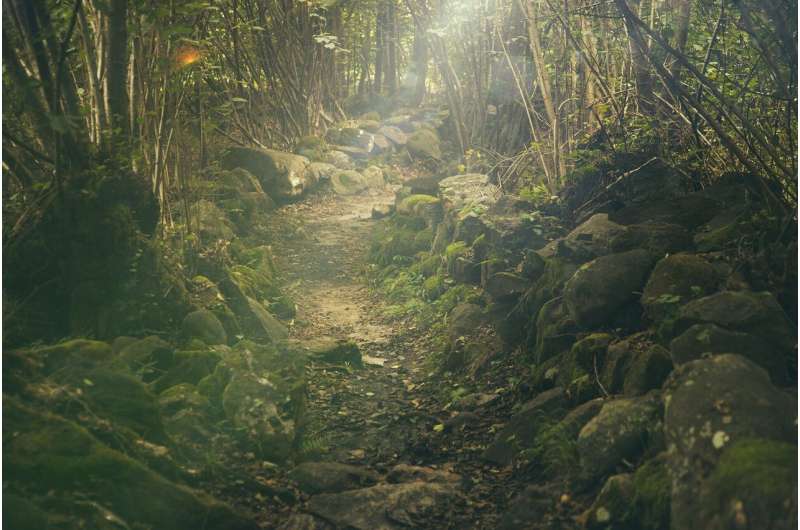This article has been reviewed according to Science X's editorial process and policies. Editors have highlighted the following attributes while ensuring the content's credibility:
fact-checked
peer-reviewed publication
trusted source
proofread
Researchers reveal how mycorrhizal species regulate plant-soil carbon in forests

In a study published in Nature Climate Change, researchers led by Prof. Zhu Jiaojun from the Institute of Applied Ecology of the Chinese Academy of Sciences (CAS) have reported a mycorrhizae-mediated trade-off between plant biomass and soil carbon sequestration in forest ecosystems under nitrogen deposition and warming conditions.
Forest ecosystems store about 80% of the carbon in terrestrial ecosystems. Arbuscular mycorrhizal (AM) and ectomycorrhizal (ECM) fungi are the most common types of mycorrhizal fungi. The type of plant-mycorrhizal association is critical for forest carbon cycling by influencing plant growth, nutrient acquisition, and soil carbon storage. The carbon sequestration characteristics of two mycorrhizal types of tree species in forest ecosystems and their response to global change drivers are important issues.
Zhu's team previously investigated the below-ground carbon accumulation in AM and ECM forests in Qingyuan Forest CERN, National Observation and Research Station. The results showed that below-ground carbon stocks of AM-dominated forests were 25% higher than those of ECM-dominated forests. However, it is still not clear how mycorrhizal associations (AM vs. ECM) influence carbon distribution among trees under global change.
In this study, the researchers collected 3,050 data sets on forest biomass, soil carbon and environmental factors under global change. A total of 12 forest carbon-related variables were analyzed and summarized to clarify the impact of global change drivers (nitrogen deposition, elevated CO2, and warming) on plant biomass and soil carbon accumulation in forest ecosystems.
They found that plant biomass increased 17.9%–31.4% under global change drivers, while soil carbon stocks varied with specific global change drivers in forest ecosystems. Soil carbon stocks increased by 7.8% under elevated CO2 due to increased root biomass and microbial activity. However, soil carbon stocks did not significantly change under N deposition and warming due to soil acidification and priming effect.
Based on the above results, the researchers further divided tree species into AM trees and ECM trees because AM or ECM fungi differ in soil nutrient uptake. For example, AM trees tend to grow in soils with relatively low organic/inorganic nitrogen ratios whereas ECM trees tend to grow in soils with relatively low inorganic nitrogen contents. The different use of nutrients in AM and ECM trees may lead to divergent responses to global change drivers.
Notably, they also found that plant biomass and soil carbon stocks increased more under elevated CO2 than under nitrogen deposition and warming. In addition, soil carbon stocks depended on mycorrhizal associations and decreased in forests dominated by AM tree species, but increased in forests dominated by ECM tree species under nitrogen deposition and warming, suggesting that mycorrhizal associations in forest ecosystems play an important role in regulating soil carbon stocks under global change.
In the future, global forest carbon models should consider mycorrhizal species when projecting plant-soil carbon allocation strategies in forest ecosystem responses and feedback to global changes.
More information: Kai Yang et al, Mycorrhizal type regulates trade-offs between plant and soil carbon in forests, Nature Climate Change (2023). DOI: 10.1038/s41558-023-01864-5
Journal information: Nature Climate Change
Provided by Chinese Academy of Sciences
















